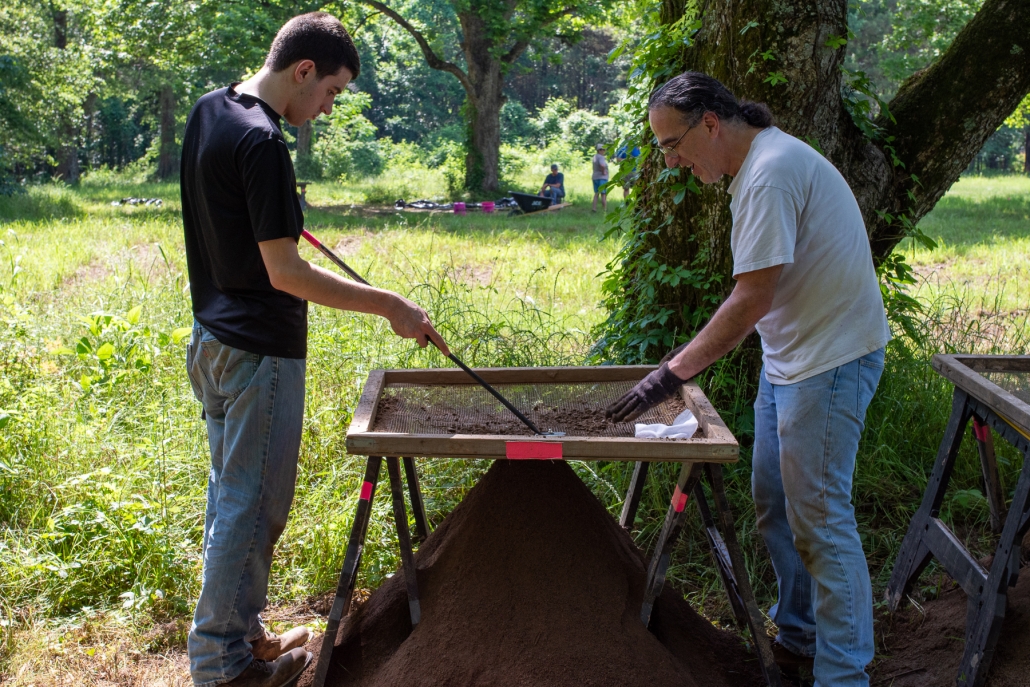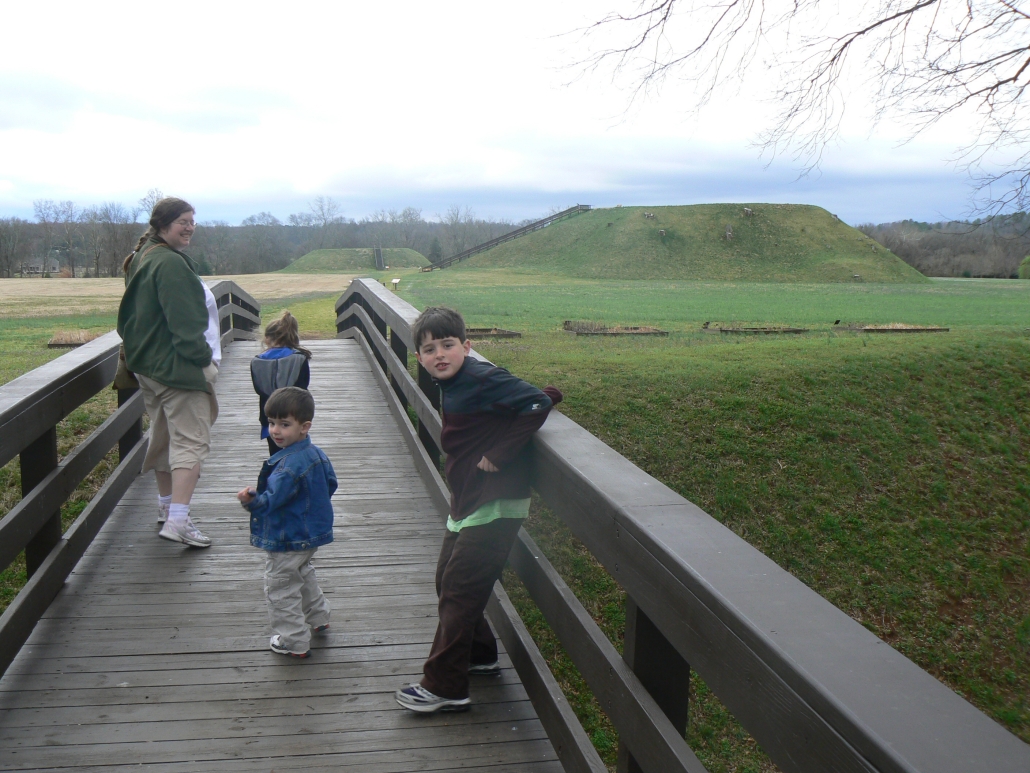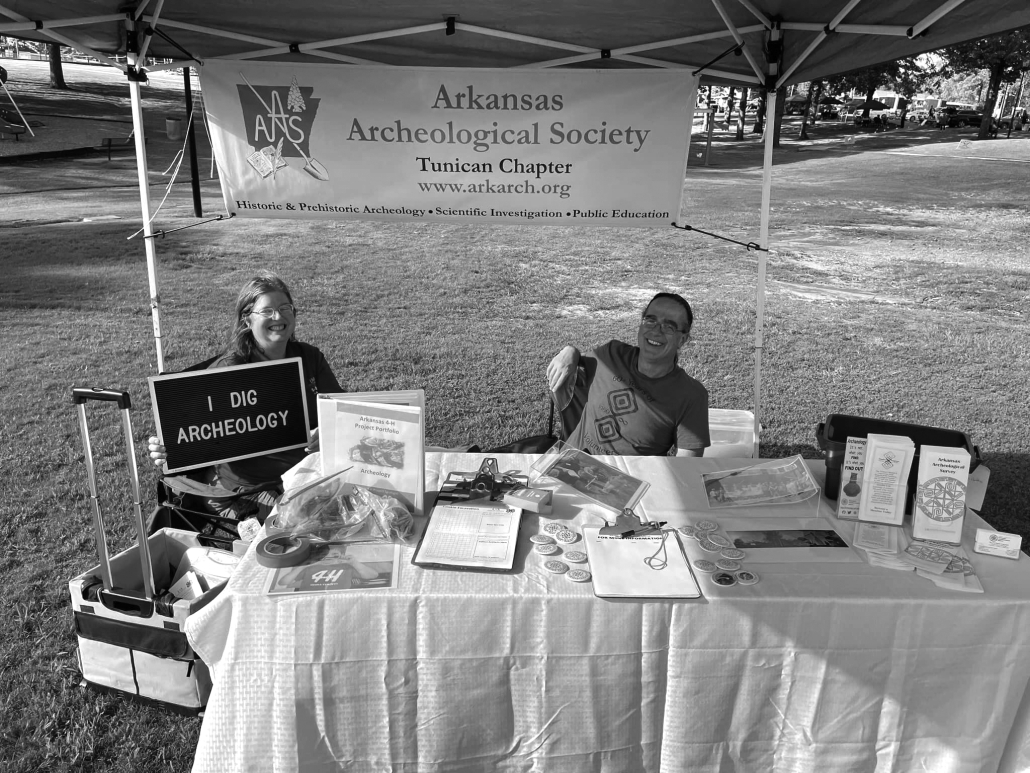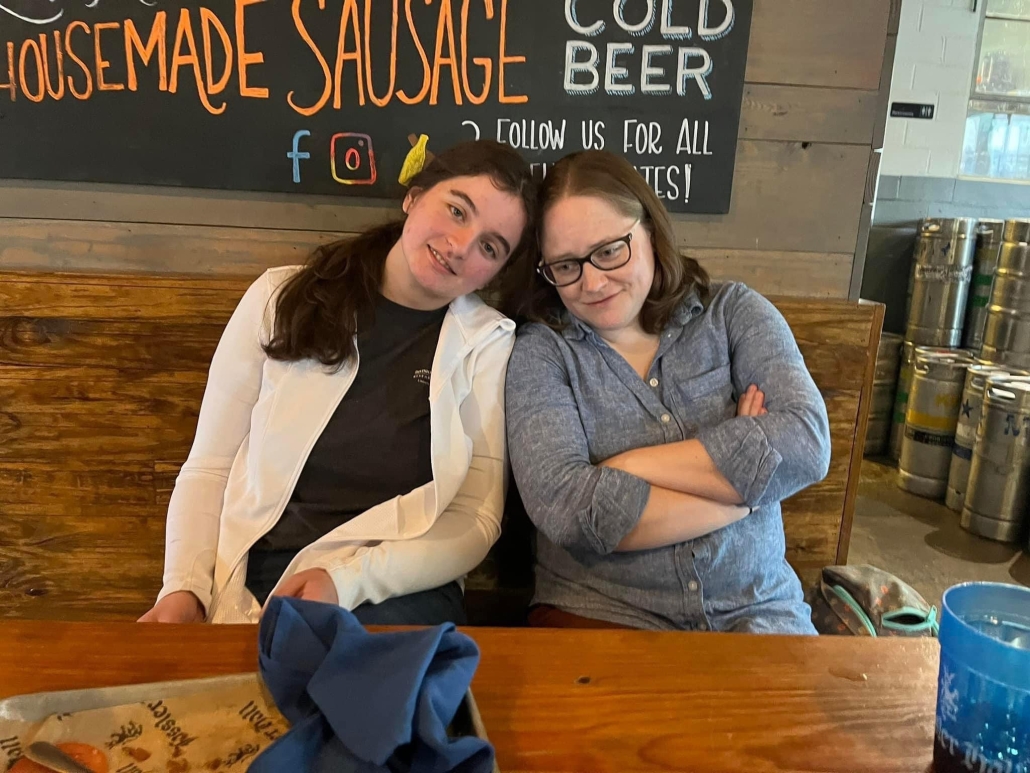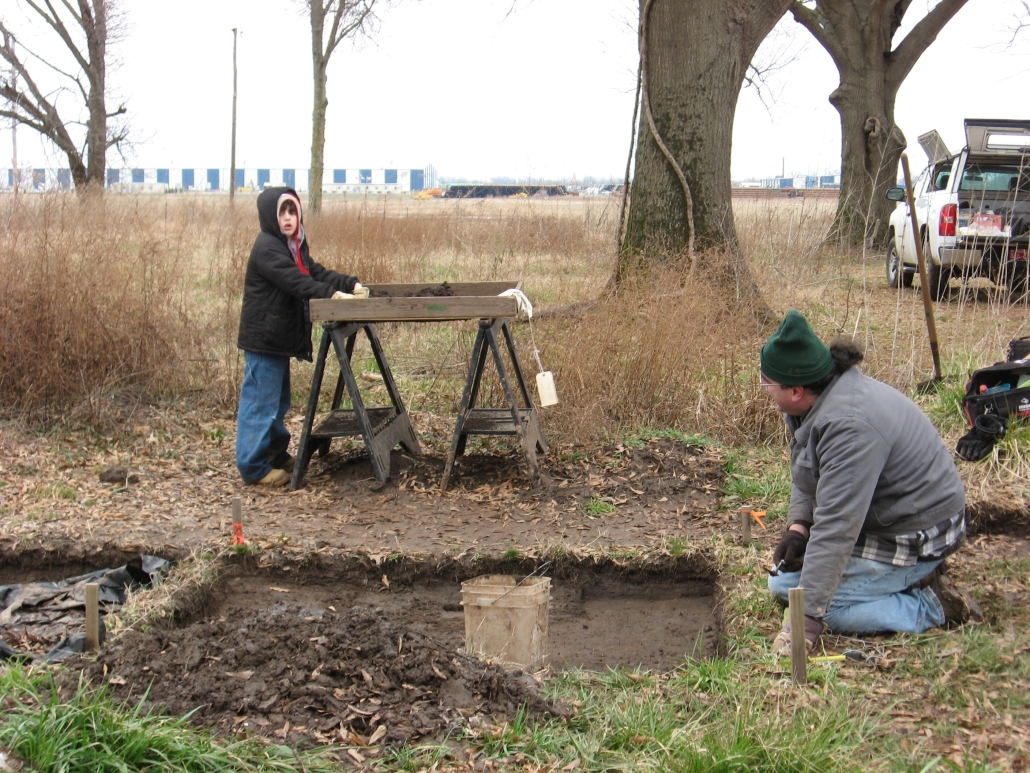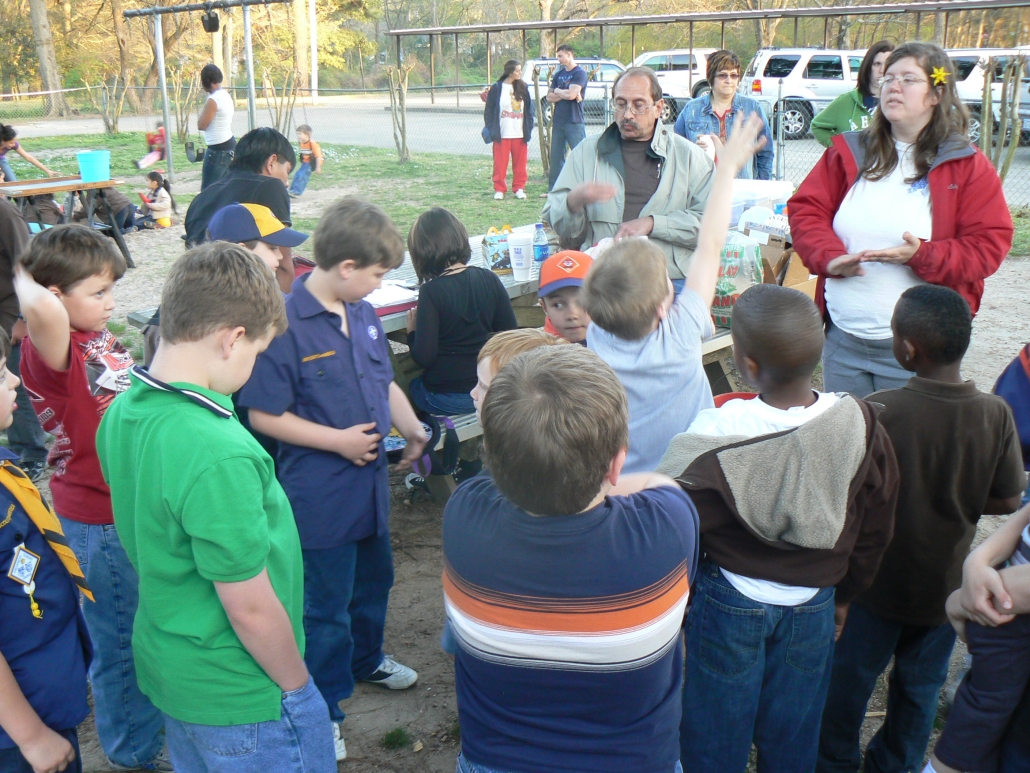In Memoriam: Don, Hope, Kenneth, and Elizabeth Bragg
Glen Akridge (AAS-Ko-ko-ci chapter), Charlotte M. Copeland (AAS-Tunican Chapter), Jessica Cogburn (AHPP), John House (ARAS-UAPB, Emeritus), Marvin D. Jeter (ARAS-UAM, Emeritus), Matthew Rooney (ARAS-UAM), Robert J. Scott (ARAS-Parkin)
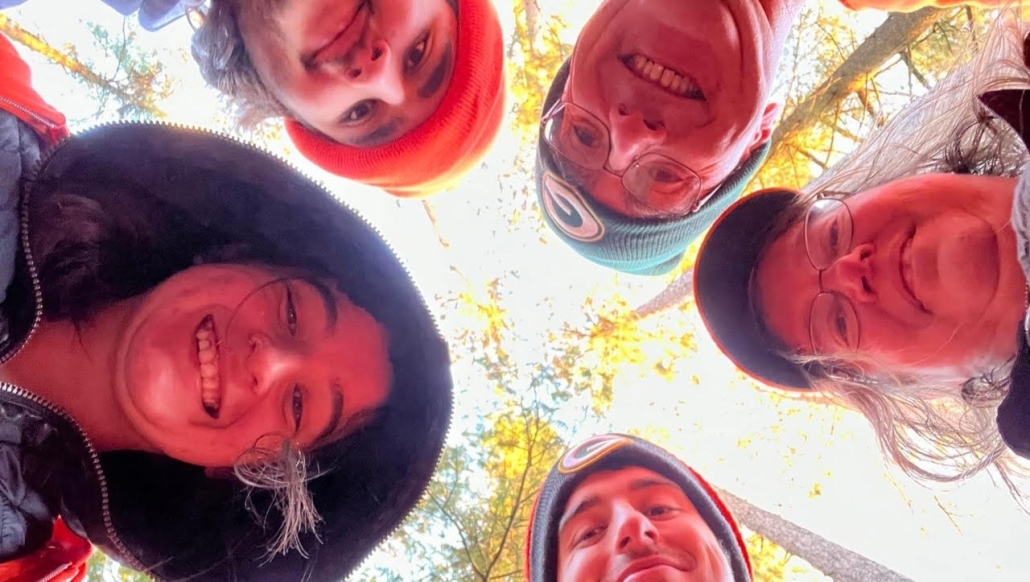
On December 30, 2023, Arkansas and the Arkansas archeology community suffered an immeasurable loss with the tragic deaths of four members of the Bragg family: Don (53), Hope (51), and their two eldest children, Kenny (22), and Beth Bragg (19). The Braggs were beloved friends and colleagues, long-time members of the Arkansas Archeological Society and the Tunican Chapter, and passionate ambassadors for archeology in Arkansas. Hope served as Society Vice President (2014-2017), President (2018-2019), and Past President (2020-2023). Don served as Vice President (2008-2010) and was awarded the Society’s Distinguished Service Award in 2017 and Member of the Year Award in 2022.
Many of us watched Kenny and Beth grow up as they accompanied their parents to Society Training Programs, Annual Meetings, and projects across the state. Don, Hope, Kenny, and Beth Bragg left an indelible mark on all who were lucky to have known them; we miss our friends dearly. In the following section, friends and colleagues reflect on the Bragg family’s legacy and their positive impact on the greater Arkansas community.
Marvin Jeter, Charlotte Copeland, Bob Scott: We are still in shock, grief, and mourning, a month after the house explosion in Whitmore Lake, Michigan that took Don, Hope, Kenny, and Beth Bragg from us (Hope’s father, Richard Pruden, and Don and Hope’s youngest son, Stephen, survived with serious injuries). We’ve known the Bragg family close to two decades, so we’ll share a few brief highlights and joyful memories of our time with them.
Around 2004, Don visited the Arkansas Archeological Survey’s University of Arkansas at Monticello (UAM) Research Station and introduced himself to Marvin, then the UAM Station Archeologist. Don, a PhD forest ecology researcher for the USDA Forest Service’s Southern Research Station, expressed a strong interest in learning about archeology. At that time, Marvin was near retirement so most of the fieldwork Don got involved in was with Bob Scott, who had recently been hired as the UAM Station’s Research Assistant. Don helped Bob with shovel testing in Bradley County, in a spot where a UAM land surveying student had found unmodified lumps of magnetite while trying to locate a buried benchmark. The artifacts they recovered confirmed it was a Poverty Point period site. That experience was just the first of many of Don making himself available whenever Bob needed assistance in the field. Don also joined Marvin on a trip to the Lake Enterprise Mound site, near Wilmot in Ashley County, where Marvin and Society members had completed test excavations in May 2003, documenting it as “the oldest (known) little mound in Arkansas” at ca. 1200 BC affiliated with the famous Poverty Point culture. This experience, and the expeditions with Bob, apparently sold Don on archeology.
Don and Hope (who had an MS in Forestry herself,) joined the Arkansas Archeological Society’s Southeast Arkansas Tunican Chapter, and they soon became very active on the regional and state levels. Don served something like nine consecutive terms as President of the Tunican Chapter. Hope created and edited a monthly e-newsletter, The Tunican, for the chapter and served as the statewide Society’s President and Vice President.
In addition, Hope earned an MA in Education at UAM (and was working towards a PhD); she taught at the UAM College of Technology at McGehee (in the “Delta” lands about 35 miles east of Monticello), and worked with 4-H Club members in that locality.
Don had already done pioneering work with records created by U.S. General Land Office (GLO) surveyors in the mid-1800s, using them to document tree species and other aspects of forest ecology in the decades before intensive Euro-American and African American settlement and forest clearance (e.g., Bragg 2003). Marvin enlisted the Braggs in using GLO records to learn about prehistoric and early historic environments for the locality around one of his late prehistoric sites, overlooking the Saline River valley in northeastern Bradley County (Bragg and Bragg 2016). Later, Don and Marvin went into the field to observe the modern tree species on different landforms in that locality; their findings of still-extant correlations are to be published in the site report.
Don combined his professional and avocational interests in research on a 1930s-1969 experimental forest in westernmost Arkansas (Bragg 2021; 2022). He also conducted research at another such property closer to his home base, the Crossett Experimental Forest (1934-present) in southwestern Ashley County. Near there, he also did some background research at a prehistoric mound site (Bragg 2017; Barnes and Bragg 2019).
In addition to archeological activities, we greatly enjoyed get-togethers with the Braggs, especially our Tunican Chapter “Pre-Xmas” feasts on the UAM campus; the annual Super Bowl parties at their home in Monticello, flavored by bratwurst sausages and a beer or two (we’ll replicate this in their honor at future Super Bowls); and Arkansas Travelers baseball games in North Little Rock. During one of the latter excursions, we were greatly amused by Don trying to keep up with little Stephen, then maybe five years old, who had developed an urge to explore the whole ballpark!
The loss of the Braggs’ two older children is especially poignant. Kenny was to graduate from college at Michigan Tech this spring (with a degree in archeology!), and Beth had just graduated from high school in Monticello and had made a promising start as a freshman at UA-Fayetteville. We miss these wonderful friends and colleagues, and hope that their many contributions will be remembered.
AAS Tunican chapter members Kenny Bragg and Don Bragg screening soil from the Hollywood Grove site (3DR475) in May 2023. Photo by Rachel Tebbetts.
John House: Don and Hope Bragg and their children were a part of my life so long that it is hard to remember when they weren’t. When I got to know them better was at the Isgrig site in Pulaski County in hot summer of 2008. By then, Don was already highly skilled in excavation and other fieldwork from his experiences at the Society training sessions. For the next three years it seemed like Don showed up every time we were in the field at Isgrig on Saturdays, driving two hours and back from Monticello. In those years, Hope would drop Don off at the site on her way to outings in Little Rock with the children. In 2010, the last year we were at Isgrig, Kenneth had already grown into a teenager and would join his father at Isgrig. Of course, I had many occasions to work with Don in the ensuing years and we frequently emailed each other in connection with articles that he was preparing for Field Notes. Later on, I had the opportunity to get to know Hope better through her activity with the Tunican Chapter of the Society and her time as Society president. I was especially pleased when Hope invited Bob Scott and me to do an activity with the 4-H group she sponsored. It was delightful to meet those fine young people and their parents and see how much Hope was teaching them about archaeology.
Glen Akridge: I probably met Don in 2004 after he became a member of the AAS, either at the Training Program or Annual Meeting shortly thereafter. Hope became a member three years later and both became life members of the AAS in 2008 when Don started his two-year term as one of our Vice Presidents. I remember being very impressed with Don’s intellect and professionalism when he joined the AAS Executive Committee. His experience with managing organizational issues was evident, and he often offered a different perspective as the Committee dealt with issues ranging from financial to legal to Society awards. In the field, Don quickly became known as one of the most dependable excavators and site surveyors. He was not just a regular at Society Training Programs, but frequently volunteered around the state on smaller projects.
Hope, too, became passionate about archeology and was an eager ambassador for the Society. She was active in the 4-H program and even developed archeology merit badges for kids in the program. This ultimately led Hope to serving on the AAS Executive Committee as Vice President, President, and then Past President. Her primary focus as an officer was on furthering the outreach of the Society to both kids and the public. Her infectious spirit always made her successful in these endeavors.
As Editor of The Arkansas Archeologist, I would be remiss if I didn’t mention their publications in the Bulletin. Don was a prolific publisher of scholarly articles in his primary profession of forestry, but in 2016 both Don and Hope (who also had a background in forestry) applied that knowledge to reconstructing the historic environmental context around the Saline-Fifteen site in Bradley County. The article used nineteenth century General Land Office maps and data as a guide to understanding the vegetative landscape near the site during its occupation from about AD 1200-1600. In 2023, Don graciously offered to participate in Volume 60 of the Bulletin honoring the late Frank Schambach, a long-time Station Archeologist for the Arkansas Archeological Survey in Magnolia. Again, Don applied his forestry experience to reconstructing the past vegetative landscape of the Middle Mississippi Period Eagle Lake site, also in Bradley County. Just two weeks before his death Don approved the final page proof of his article for the Bulletin, possibly one of his last published articles.
On a more personal note, we all lost two great friends. They were passionate about archeology and helping the Arkansas Archeological Society in any way they could. We all came to know Kenny, Beth, and Stephen as they accompanied their parents to digs and meetings. They will be sorely missed by anyone that knew them. Let’s all do a Green Bay Packers cheer in their honor.
Hope and the kids visiting Etowah Indian Mounds site in Georgia. Photo courtesy of the Bragg family.
Jessica Cogburn: I first met the Braggs in 2008 when I took the job of ARAS Station Assistant in Monticello. Don was always available to volunteer. Hope became a very close friend. We would go to movies, drink wine at my house on Winey Wednesdays, eat dinner together frequently, carve pumpkins for Halloween. I introduced Hope and the kids to Dr. Who. Don never understood how awesome the show is. We watched lots of Harry Potter and Lord of the Rings. Their cats, who have since passed, were named Draco and Bellatrix.
I remember Hope calling me one day to tell me that the house next door to them was available. She stalled the landlord so I could come meet him and get the house, and we became neighbors not long after. Hope tried so hard to bribe my dog, Simon. He was not a fan of kids and therefore not a fan of Hope because she had three of them. She was constantly feeding him treats through the fence and talking to him.
Beth had her first overnight sleepover at my house. She was the sweetest, funniest girl. She had a way with all kids and loved all animals.
Kenny would always joke that he was getting to be taller than me and he eventually far surpassed me in height. His first job was mowing my lawn so he would learn some responsibility. He was a smart, kind, diligent young man and I was looking forward to watching him become an archeologist.
The whole family was there for me in the hardest of times. They were absolutely amazing together and as separate individuals. I loved them so much.
Matthew Rooney: I find it difficult to write something all-encompassing about Don Bragg, I think because he had his reach in so many places and with so many people. Perhaps nobody outside of his wife experienced all of his facets as a human being. I myself came to befriend him due to our shared passion for archeology and history nearly three years ago. I quickly learned that he was a very passionate man with many loves, and I was always amazed that he was somehow able to participate in them all in such an eloquent way.
Don was very intelligent and an excellent scientist—but not only as a forestry specialist. It is rare that a scholar will step outside of their specialization and conduct high quality research in another field, but Don did so frequently. He brought his vast knowledge to bear on whatever project we were tackling.
When I was trying to study antebellum building construction on Bayou Bartholomew, he took me down to the water’s edge and showed me exactly which trees would have been cut, what sections would have been used for various purposes, and how they would have been moved by people in the past. When I was trying to understand the layout of a historic cemetery lost to the woods, he found evidence of non-native trees that had been planted as memorials at the heads of graves.
Don was a dedicated archeologist and spent decades participating in research projects all across the state of Arkansas. In fact, I’ve never done a dig in Arkansas where Don was not a participant. Despite his busy schedule as a doting husband, a proud father of three children, and enthusiastic project leader for the US Forest Service, he somehow always found a way to fit in time to dig, coming out at times just for half a day before going back to his office to take care of business or go pick up one his children from school.
In addition to science, Don had a great passion for the arts. He had a great love for science fiction television and film and also for live theater. He and his family kept season passes for theatrical events in Little Rock, and Don would take the time to drive Hope and the children hours on a regular basis to experience all kinds of live music, theater, and performance art.
Anyone who knew Don knows that his dedication to his family and especially his children went beyond just enriching their lives in Arkansas. Don took “Bragg Family South” all over the country, sharing his passion for natural landscapes as well as history and culture with his children. He kept an online blog containing his thoughts as well as his photographs of their journeys to be saved for the future. Very little time was spent on frugal or mundane activity. Don was always looking up, whether it was at fantastic buildings or trees or mountains. He made sure that his children had every opportunity to experience the same wonders.
For most people, myself especially, focusing on more than 2 or 3 of these things is overwhelming. It wasn’t for Don. In addition to his scientific pursuits, archeology passion, love for the arts, and desire to see natural landscapes, Don was also an avid follower of sports—particularly American football.
Whenever I entered the Bragg’s home I giggled at the signs hanging on the wall stating that I was in Packer country, and anyone who talked to them soon found out that they also passionately followed their old college team from Michigan Tech, where Don met the love of his life, Hope.
Don took every opportunity to celebrate Hope and their milestones as a couple, sharing with all of us his photographs old and new—of all of their adventures together as well as their romance. As in everything he did, this aspect of Don’s life was genuine—not a show or an act.
Don was one of the most gracious, caring, intelligent, warm, charming, invigorating people I’ve ever had the pleasure to stand beside. I dream of some reality where we can go on working together, digging holes and finding old stuff and sharing it with the world. While he is irreplaceable as a human and a friend, I hope that others whose lives he touched carry his passions forward. His loss bolsters my own devotion to protect all that is beautiful in the world—past and present—and share it with all of those people yet to come.
Hope and Don Bragg recruiting for the Tunican Chapter of AAS at “Our Festival” in Monticello, August 2022. Photo by Matthew Rooney.
Beth Bragg and Jessica Cogburn, October 2023. Photo courtesy of Jessica Cogburn.
Kenny and Don Bragg at Isgrig, February 2010. Photo by John House.
Beth and Stephen Bragg excavating a unit at the Society’s 2016 Summer Training Program. Photo by Jessica Cogburn.
Hope talking to a Cub Scout troop about archeology. Photo courtesy of the Bragg Family.
Selected Bibliography
Barnes, Jodi A. and Don C. Bragg
2019 Partnering for Forest and Cultural Resource Management: Lessons from the Sulphur Springs Site (3AS1/5). Field Notes, Newsletter of the Arkansas Archeological Society 408:3–11.
Bragg, Don C.
2003 Natural presettlement features of the Ashley County, Arkansas area. American Midland Naturalist 149(1):1-20.
2015 Descriptions of Some Arkansas Mound Sites from 1870. Field Notes, Newsletter of the Arkansas Archeological Society 384:3–8.
2016 Descriptions of Some Arkansas Mound Sites from 1870: An Update. Field Notes, Newsletter of the Arkansas Archeological Society 392:3–8.
2017 A Letter on the Sulphur Springs Mound Complex in Ashley County. Field Notes, Newsletter of the Arkansas Archeological Society 394:9–11.
2021 Surveying the Administrative Site (3PL1058) of the Former Irons Fork Experimental Forest. Field Notes, Newsletter of the Arkansas Archeological Society 420:3–11.
2022 Surveying the Weirs of the Former Irons Fork Experimental Forest. Field Notes, Newsletter of the Arkansas Archeological Society 426:3–11.
2023 “Such Wonderful Country for Hunting, Fishing, and Gathering, and Just as Poor for Horticulture”: The Historical Natural Environment Surrounding the Eagle Lake Mounds Site (3BR4). The Arkansas Archeologist 60: 25-58.
2023 A Controlled Surface Collection Alon the Shores of Mound Lake. Field Notes, Newsletter of the Arkansas Archeological Society 434:3–6.
Bragg, Don C., and Hope A. Bragg
2016 Historical and contemporary environmental contexts for the Saline-Fifteen site (3BR119). The Arkansas Archeologist 55:1-30.
Bragg, Kenneth
2023 Your Support Matters: Reflections on the 2023 Training Program. Field Notes, Newsletter of the Arkansas Archeological Society 434:13-14.
Bumgartner, Mistic, Brenae Hall, Brandon McPherson, Madison Moncrief, Lyndie Mullins, Priya Rana, Kenny Bragg, Chase Owen, BreeAnn Lanthrip, Jodi Barnes, Don Bragg, Katy Gregory, and Hope Bragg
2015 Landscape Change at Hollywood Plantation: Archeology at the Taylor House (3DR26). Field Notes, Newsletter of the Arkansas Archeological Society 387:3–9.
Howe, Jessica R. and Don C. Bragg
2012 Searching for the Remains of the 1870–1933 Drew County Courthouse (3DR318). Field Notes, Newsletter of the Arkansas Archeological Society 364:3–8.

